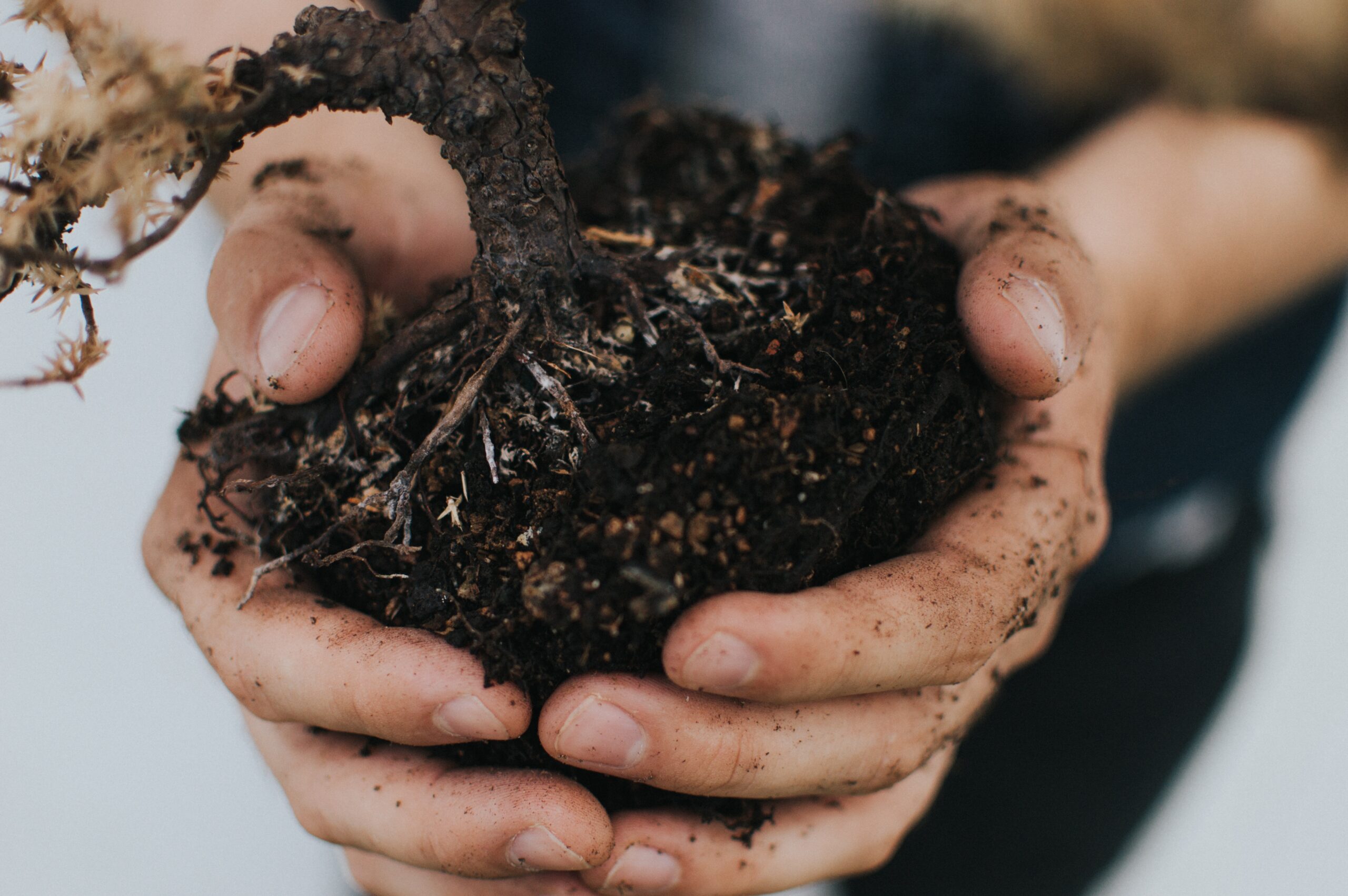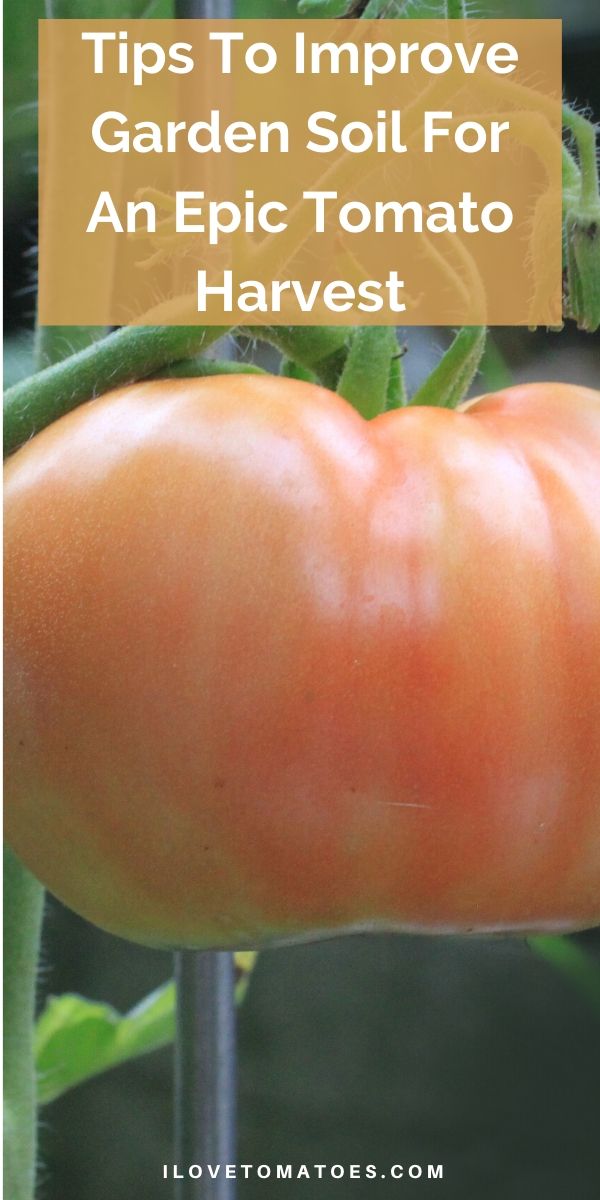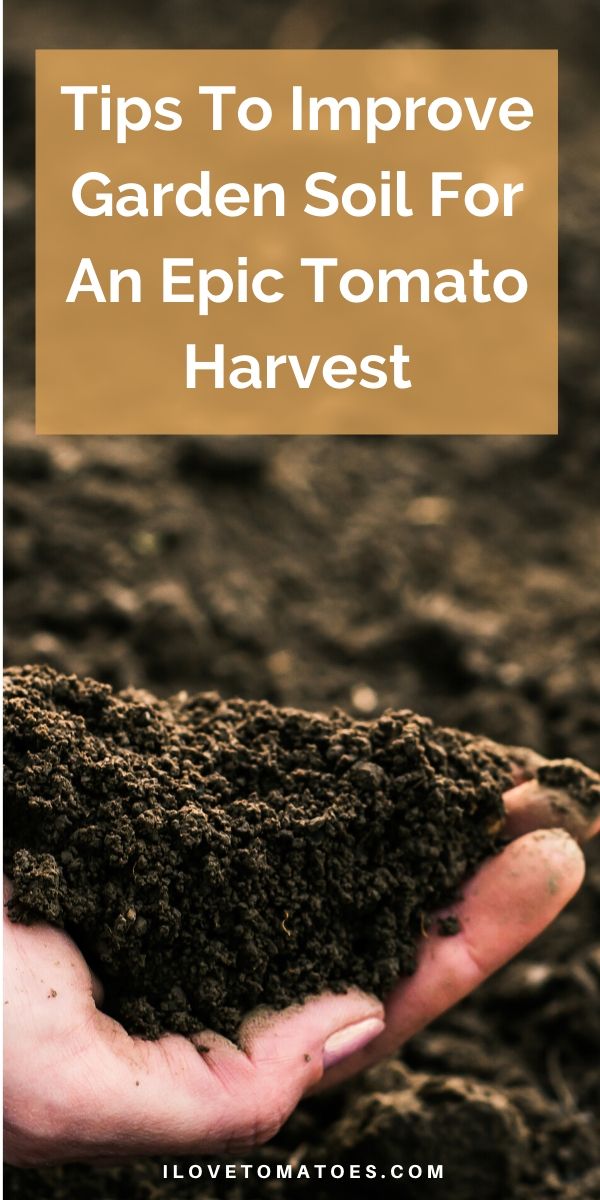Tips To Improve Garden Soil For An Epic Tomato Harvest

If you are going to invest the time, money and energy to grow tomatoes, you’ll want to achieve the best possible results for your efforts. When you start researching how to achieve this, you will no doubt come across the topic of improving the garden soil.
Learning how to properly improve your garden soil is a cornerstone of growing tomatoes from seed.
At first glance, however, this topic can appear very complicated. So let’s start by looking at some basic facts.
The primary goal of improving your soil is to improve its composition by either adding in missing nutrients or minimizing negative elements.
Through this process of calculated addition or subtraction, you can create an ideal soil environment for your plants to thrive.
Tips To Improve Garden Soil For An Epic Tomato Harvest

TEST GARDEN SOIL
To get started, you’ll want to test your soil in order to establish a baseline starting point.
Home improvement and gardening stores usually offer a variety of affordable soil testing kits so you can determine the exact pH level of your soil.
This is a really important step because if your soil is either too alkaline or too acidic, your plants’ ability to absorb the proper nutrients from the soil will be inhibited.
GARDEN SOIL pH LEVELS
When your soil’s pH level is out of whack, it won’t matter how much fertilizer you add later because your plants won’t be able to access the nutrients you are trying to provide.
When testing the pH level of soil, a reading of 7.0 is considered neutral.
Tomatoes, like most vegetables, are happiest when the soil is slightly on the acidic side. (A reading of 6.0 – 6.8 is ideal for tomatoes).
When your soil falls in this range, all those important nutrients, such as nitrogen, phosphorus, calcium, potassium, iron, and manganese can be properly absorbed by your tomato plants.
If you find that your pH is not ideal after testing your soil, you’ll want to add different amendments to correct the problem.

SOIL IMPROVEMENTS FOR ACIDIC SOIL
The exact amendments you choose will depend on whether you are trying to move up or down the pH scale and on what’s available in your geographic location.
As a general rule of thumb, if your soil is too acidic, you can add limestone or lime to raise the pH to an acceptable range.
However, you’ll want to be careful not to over-lime your soil if you go that route.
SOIL IMPROVEMENTS TO LOWER ALKALINITY
On the other hand, organic mulches, sphagnum peat, elemental sulfur, or aluminum sulfate are effective amendments for lowering the alkalinity of soil.
You might want to talk to a county extension agent or Master Gardener before determining what amendments to use and in what quantities for your location.

HOW TO ENHANCE SOIL NUTRIENT LEVELS
For enhancing the nutrient levels in your soil, you’ll also find some beneficial soil amendments right in your own kitchen.
Creating your own organic compost pile is a great way to feed your garden all season long.
Eggshells, banana peels, organic plant-based kitchen scraps and coffee grounds are excellent ways to add potassium, phosphorus, calcium and other natural nutrients to your soil.
Eggshells, in particular, are a great way to add more calcium to your soil. It is important for your tomato plants to get sufficient amounts of this particular nutrient in order to avoid the dreaded blossom end rot.
Just make sure you clean the empty shells thoroughly before adding them to your garden.
With a little bit of planning, you can create the perfect soil for an abundant tomato fall harvest.


